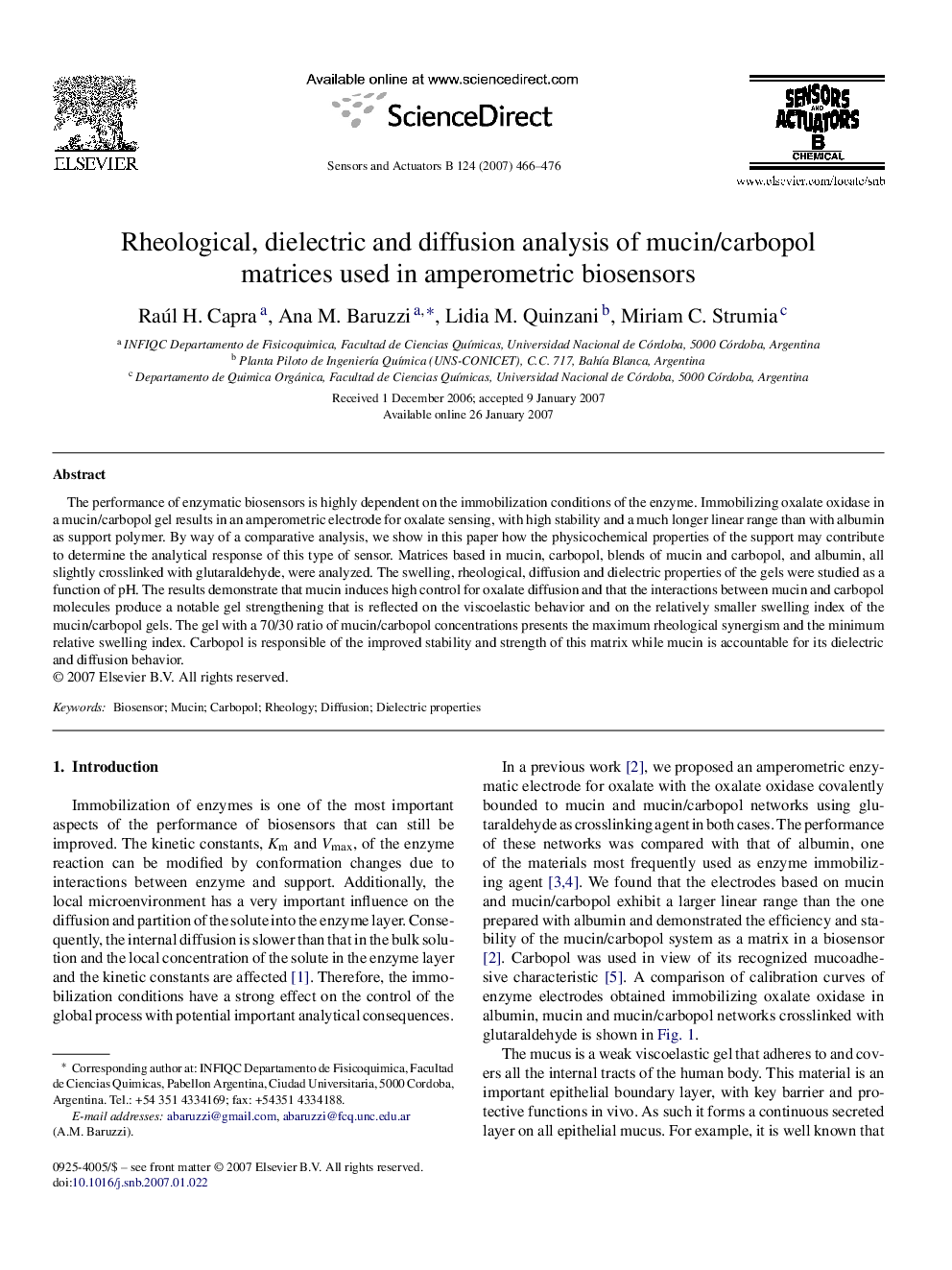| Article ID | Journal | Published Year | Pages | File Type |
|---|---|---|---|---|
| 741664 | Sensors and Actuators B: Chemical | 2007 | 11 Pages |
The performance of enzymatic biosensors is highly dependent on the immobilization conditions of the enzyme. Immobilizing oxalate oxidase in a mucin/carbopol gel results in an amperometric electrode for oxalate sensing, with high stability and a much longer linear range than with albumin as support polymer. By way of a comparative analysis, we show in this paper how the physicochemical properties of the support may contribute to determine the analytical response of this type of sensor. Matrices based in mucin, carbopol, blends of mucin and carbopol, and albumin, all slightly crosslinked with glutaraldehyde, were analyzed. The swelling, rheological, diffusion and dielectric properties of the gels were studied as a function of pH. The results demonstrate that mucin induces high control for oxalate diffusion and that the interactions between mucin and carbopol molecules produce a notable gel strengthening that is reflected on the viscoelastic behavior and on the relatively smaller swelling index of the mucin/carbopol gels. The gel with a 70/30 ratio of mucin/carbopol concentrations presents the maximum rheological synergism and the minimum relative swelling index. Carbopol is responsible of the improved stability and strength of this matrix while mucin is accountable for its dielectric and diffusion behavior.
